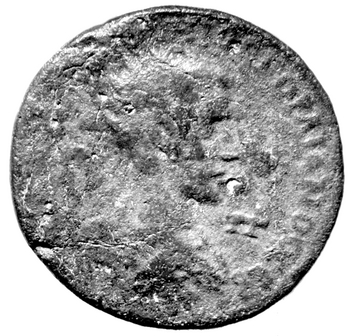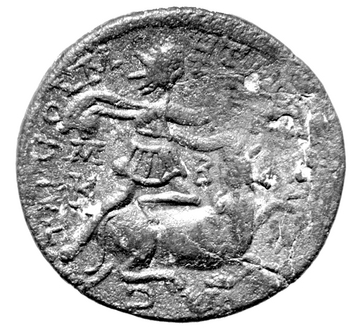(L) Okay, is there any reality to these "children" people are witnessing?
A: Window fallers at approach of the wave or at points of realm border weaknesses due to some related phenomenon. Things like jumbo jets exiting and other things entering. Things will get a lot more interesting along this line soon.
27 March 2025:
'Dinosaur' sightings are on the upswing in the Congo — High Strangeness — Sott.net
DNA-code determines FRV Realm-fit hypothesis:
Probably Realm Border weakenings in Congo. So people see these ghost mirage images of dino-like creatures projected over from their own fully physical "dino"-reality into our human-reality as the dino-reality/realm temporarily blends into ours. Because both are each a fully physical reality, these projected-over creaure BLEND-INs (coming from the Other reality) may be not only images, but half-physical / projected "dino-like"-creature bodies from the dino-realm, where I think they ought to be fully physicalized, as they fully fit there.
According to their special Dino-DNA-code, which forcefully aligns to FRV as well, I think, fits only their DINO-FRV-REALITY. Nicely sorting all differently DNA-FRV-coded creatures into their own fully physical realms. By Intelligent (Realm) Design, I think. So:
1. Dino DNA-FRV-coded creatures are put / forcefully push-aligned into the dino-realm
2. Human DNA-FRV-coded creatures are put into the human-realm as per their SIMILAR DNA-code, I think, which resonates on its own human-frequency, thus has its specific FRV pulling / pushing all human-DNA-coded creatures into the human-FRV-realm. So when you walk over into the Dino-FRV-Reality, your human FRV-DNA-Code will not fit. You will feel disoriented, nauseated, strange, unbecoming there, I think. It will be hard for you to anchor there, so you will be pushed back into the human realm, where your FRV and DNA-code fits, I think. Now you know, how those dinoes in Congo feel. :D
So when the
Organic Portal lady in the Church story transforms into a demon... that is rather a demon wormholes through her Organic PORTAL body into the human realm.. same way how a space ship in a sci-fi movie uses a deep space wormhole to travel..... then that differently DNA-FRV-coded demon body, which is now in the human DNA-FRV-coded realm - existing-resonating in a FRV-INCOMPATIBLE realm - MUST GO back to the demon-realm, I think, because its DNA-coded body resonating on a demon-FRV pulls it back into its own realm-reality, where its DNA-Code and FRV fits.
3. Sometimes the borders of these 'differently FRV-ed Realms' weaken. Each realm is housing differently DNA-FRV-coded creatures and when the border between incompatible realms gets THINNER, just like how a thick mist in the Chinese mountains gets thinner, its permeability enables creatures to cross or project over. Sort of like doing a botched half-teleporting into our human realm. Hollywood movies show this very well, when the ghost image of a time-traveler temporarily appears before us, utters a cry then disappears, is pulled back into its own time / FRV realm.
4. So Realm Border weakenings may cause some **INCOMPATIBLE DNA-CODED CREATURE MIXING** between the two realms, but only temporarily and the physical projection of these bodies / cross-overs are not perfect. Because the two Realms/realities resonate differently, DIFFER in FRV, differ in DNA code. Thus these differently DNA-FRV-CODED and differently resonating creature bodies DON'T FIT well in an alien reality, are incompatible with each other. FRV_CREATURE_A is a bad fit in FRV_REALM_B: cannot be perfectly physicalized. Its an FRV-DISSIMILAR realm. DNA Code describes, shows, indicates Frequency Resonance Vibration, I think: Because FRV probably determines the DNA-code structure. Sort of like how ice crystals form in winter as determined by physical laws of 'Nature = FRV'. So FRV may determine REALMS PHYSICAL STRUCTURE. Creatures only fit into their own reality, according to the FRV of their DNA-code, I think.
Therefore farmers see bullets going through the Skinwalker-Ranch big black Wolf-Dogs and the creatures may be not reacting to bullets if they only half-physicalized. Well, if you are not fully physicalized in your room - like a ghost -, you wouldn't react to a strong slap as a normally fully physicalized human would, would you?
So when you see a Dino-realm-creature, then it is just "half teleported" here, I think, because it does NOT fit the FRV of our human realm. Cannot resonate well here in our human realm, because of its different FRV. Here you see only Human-realm-creatures, because we fit here according to our DNA-Antennae-determined-Frequency-Resonance-Vibration. (FRV) Could be the other way around: FRV determines how atoms coagulate, stick together to form physical bodies in a realm, their DNA strands get forcefully structured according to FRV. But either way I think FRV and DNA-Code matches, thus creatures are sorted into different realms determined by their DNA-Code-FRV.
So people can see these dino-creatures bend reed and enter the water and make a splash. People can shoot these dino-creatures. Probably shots are going through these half-physical dino bodies. As reported in the Skinwalker Ranch "wolf-dog" stories and John Keel's "dragon" stories. Sometimes cowboys are even rumored to cut the wings off of these "winged-dragon-eel" creatures, but then the story trail ends. Probably because the cut-off body-remains just disappear with time, as the cut off skin bio-matter slips back, goes back into its OWN, proper, fitting DNA-FRV-coded reality.
Eventually as the realm-border solidifies, these mirage-like creature-projections / half-teleportations "from beyond" should stop, I think. Similar to the northern lights, you don't see them all the time, only when star radiation hits the Earth.
 I must confess..... It's about 35 to 40degC at the moment in Queensland, Australia, So I'm looking forward to our winter. It gets down to 0, -2, .......Soooo that will be fun!!!! BTW love the singing loud in the shower... I might have to learn some heavy-metal numbers for the winter.... only joking,, heavy-metal will kill my throat!! haha..
I must confess..... It's about 35 to 40degC at the moment in Queensland, Australia, So I'm looking forward to our winter. It gets down to 0, -2, .......Soooo that will be fun!!!! BTW love the singing loud in the shower... I might have to learn some heavy-metal numbers for the winter.... only joking,, heavy-metal will kill my throat!! haha.. I must confess..... It's about 35 to 40degC at the moment in Queensland, Australia, So I'm looking forward to our winter. It gets down to 0, -2, .......Soooo that will be fun!!!! BTW love the singing loud in the shower... I might have to learn some heavy-metal numbers for the winter.... only joking,, heavy-metal will kill my throat!! haha..
I must confess..... It's about 35 to 40degC at the moment in Queensland, Australia, So I'm looking forward to our winter. It gets down to 0, -2, .......Soooo that will be fun!!!! BTW love the singing loud in the shower... I might have to learn some heavy-metal numbers for the winter.... only joking,, heavy-metal will kill my throat!! haha..



